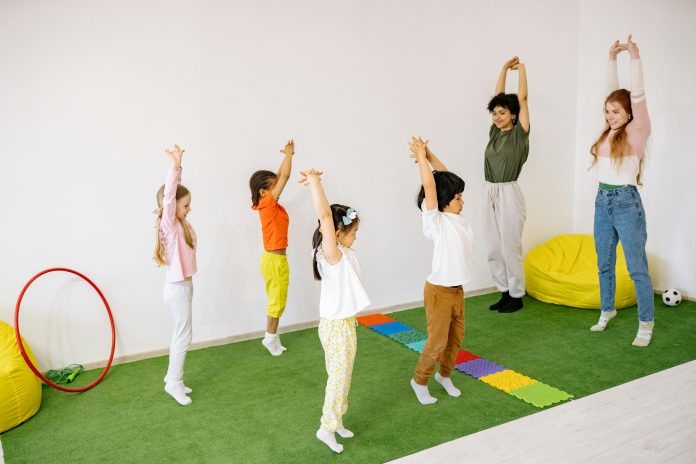Physical activity is key to lifelong health and wellbeing. Children as young as preschool age benefit from exercise and fitness as much as adults do.
Being active helps children and teens to feel stronger and have more energy to do all the things they like to do. It can help them feel, think, and sleep better. It allows them to focus when they’re at school and perform better in sports. They can reach and stay at a healthy weight and build lean muscle. Being physically active lowers the risk for serious health problems, and keeps bones, muscles, and joints strong.
Tips for Getting Moving!
One of the best things you can do for your child’s health is to help make physical activity a habit, something that will be a natural part of your child’s daily life through adulthood.
Stay positive! It’s important for children to have fun, so don’t force them to exercise. Instead, find activities they like to do and will do without being asked.
Create ways for your child to be active for at least one hour each day. Try to break it up throughout the day so it adds up to one hour. Encourage your child to do things like running, jumping rope, or playing soccer.
Plan family activities that involve exercise. Hike, bike, wash the car, walk … the options are endless. Try an online exercise video. Offer choices, and let your child decide.
Have your child invite a friend over. This can be a weekly planned physical activity, such as a bike ride, water balloon toss, or building a snow fort in the yard.
Join other families and create neighbourhood time. Include group activities like touch football, basketball, or hide-and-seek.
Let your child try different organized activities. See what your child enjoys! Basketball, lacrosse, dance, soccer, martial arts … again, the options are endless. Praise your child for doing exercise that they enjoy.
Talk to your child’s caregiver or sitter. Discuss ways they can encourage your child to be physically active throughout the day.
Get your child involved in activities at schools or clubs. Check local schools, YMCAs, and other community resources for exercise or sports programs. Take your child with you to your health club if it has a family exercise time or a swimming pool.
Types of Activities for Children
There are three types of activities that children should take part in:
- Aerobic or “cardio” exercise: This kind of exercise strengthens the heart and lungs and builds endurance. Children often get aerobic activity without realizing it. Playing tag, dancing, swimming, racing down the street, walking, and playing catch with friends all provide aerobic exercise. Many schools and communities have programs for soccer, T-ball, and other activities. These are great ways for your child to get aerobic exercise and meet new friends.
- Muscle strengthening: This type of exercise helps support proper posture, balance, coordination, and reduces the risk of injuries. Regular strength training can help regulate metabolism and improve insulin sensitivity, reducing the risk of obesity and related metabolic disorders in children. Playing on playground equipment, monkey bars, rope or tree climbing, and gymnastics are a few examples of activities that work on muscle strengthening.
- Bone strengthening: Anything that uses the body to work against gravity, like running, jumping rope, playing hopscotch, and playing basketball are activities that help with bone growth and strength. Many bone strengthening activities are also aerobic and muscle strengthening exercises.
Your Child’s Habits Start with You!
The most important thing to remember is that you are your child’s role model. Your habits affect your children’s habits. If your habits are healthy – eating a balanced diet, getting regular exercise, looking forward to tomorrow, for example – your children are more likely to build those habits in their own lives.










